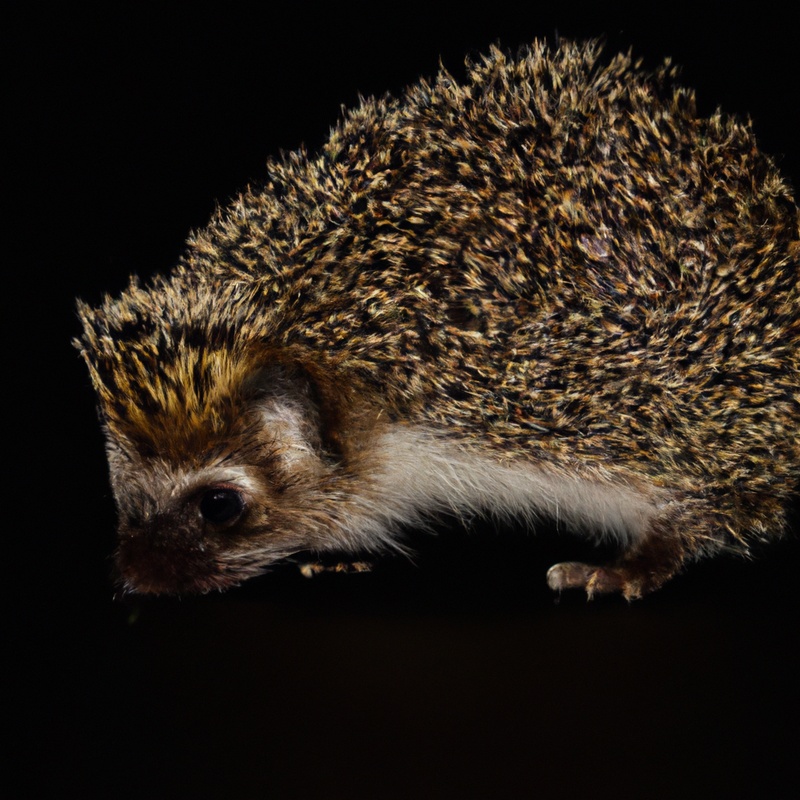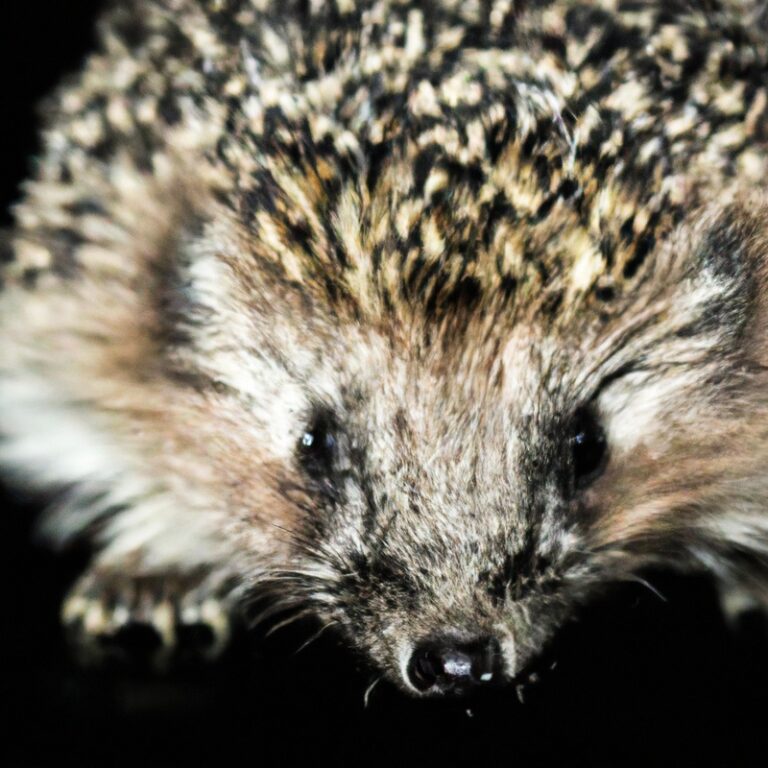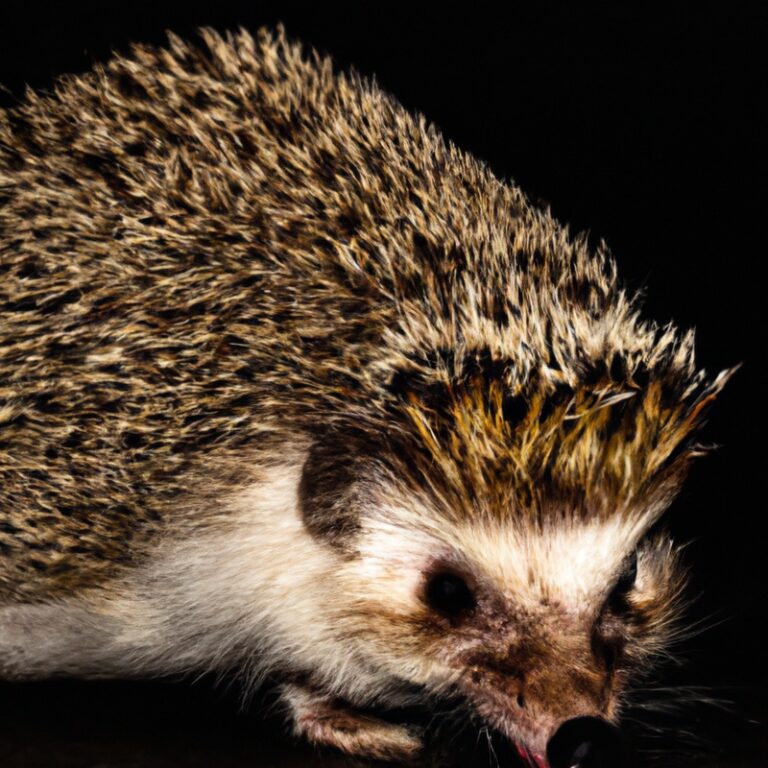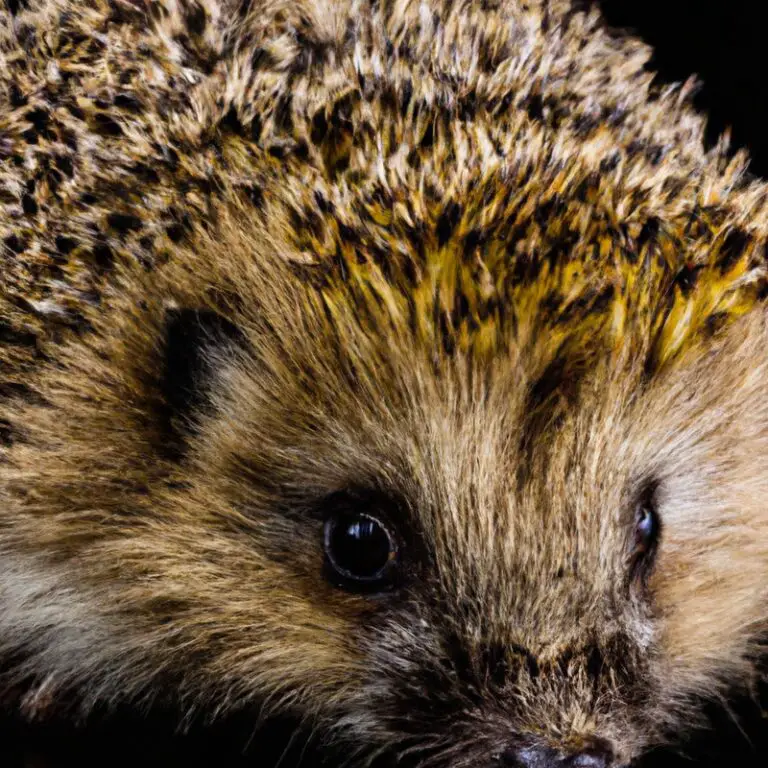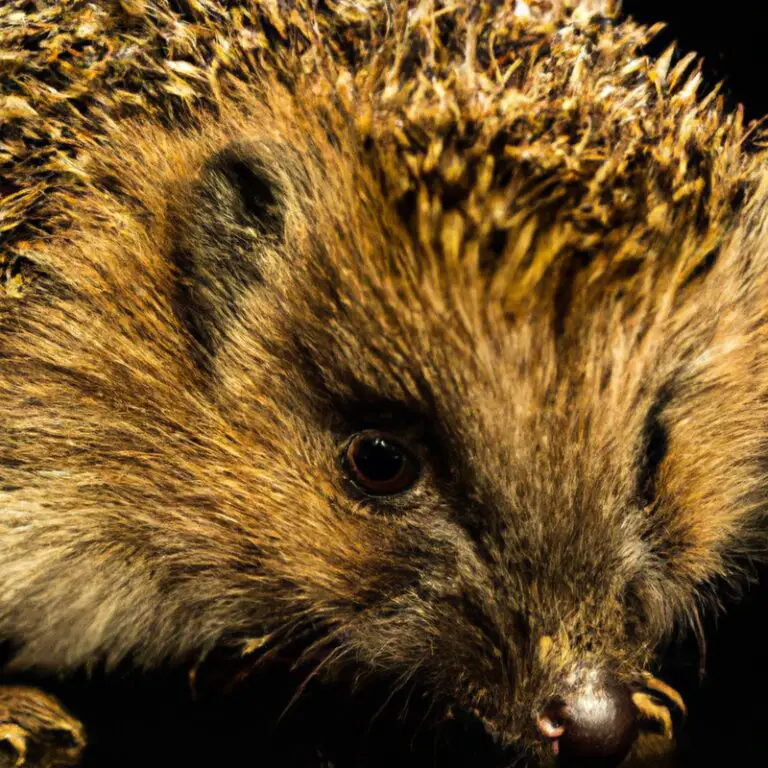How Do Hedgehogs Find Mates?
Key Takeaways:
- Hedgehogs use scent markings and vocalizations to attract potential mates.
- Female hedgehogs seek out male hedgehogs during the breeding season.
- Hedgehogs engage in courtship behaviors before mating.
- Mating in hedgehogs typically occurs at night.
Have you ever wondered how hedgehogs find their perfect match in the vast wilderness?
Well, my friend, you’re in for a fascinating journey into the world of hedgehog courtship and mating! These adorable prickly creatures engage in intriguing rituals and communication methods to attract a suitable mate.
From delicate scent marking to curious vocalizations, hedgehogs have their unique ways of expressing their interest and finding their life partners.
But how do they navigate this complex world of romance?
Join me as we delve into the secrets of hedgehog love and unravel the mysteries of their mate selection process.
Get ready to be captivated by their enchanting behavior!
| How do hedgehogs find mates? |
|---|
| Hedgehogs look for mates through a process called courtship. Male hedgehogs often roam around in search of females during the breeding season. |
| Males use a combination of vocalizations, pheromones, and physical displays to attract females. |
| Once a male hedgehog finds a receptive female, they engage in a series of courtship behaviors, including nose-to-nose sniffing and circling each other. |
| If the female is interested, she will allow the male to mate with her. The mating process for hedgehogs is relatively quick and straightforward. |
Hedgehog mating behavior
Hedgehog mating behavior involves courtship rituals, scent marking, and vocalizations.
Description of hedgehog courtship rituals
Hedgehog courtship rituals are fascinating to observe. The process begins with the male hedgehog performing a series of intricate dances and displays to attract a female.
These displays often involve circling, sniffing, and vocalizations.
Once the female is interested, she will reciprocate by engaging in similar behaviors. This courtship period can last several days, during which the pair will establish a strong bond.
Eventually, mating occurs, and the female will become pregnant.
Hedgehogs’ courtship rituals are a special and unique way for these adorable creatures to find mates.
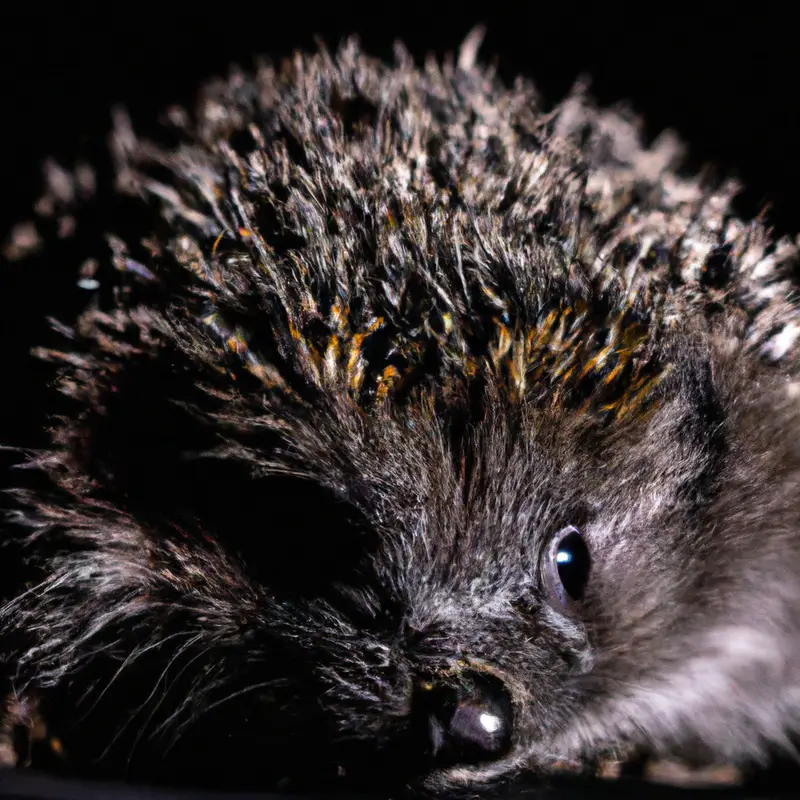
Explanation of the role of scent marking in hedgehog mating
Scent marking plays a crucial role in hedgehog mating.
Hedgehogs use their scent glands to mark their territory and attract potential mates.
By leaving their scent in specific areas, they send signals to other hedgehogs about their presence and availability for mating.
This helps in communication and reducing conflicts between individuals.
Scent marking also plays a role in courtship, as male hedgehogs might leave their scent near female hedgehogs to indicate their interest.
So, scent marking is an important part of the hedgehog’s mating behavior.
Importance of vocalizations in hedgehog mating
Hedgehogs use vocalizations to communicate during mating.
These sounds are important in attracting potential mates and establishing dominance.
By listening to these vocalizations, hedgehogs can determine the readiness and availability of a potential partner.
The pitch and intensity of the vocalizations can convey information about the hedgehog’s size, strength, and overall fitness.
These vocalizations play a crucial role in hedgehog mating behavior and are essential for successful reproduction.
Hedgehog reproductive anatomy
Male hedgehog reproductive organs and female hedgehog reproductive organs both play important roles in the hedgehog’s reproductive process.
Description of male hedgehog reproductive organs
Male hedgehogs have a unique reproductive anatomy.
They have a pair of testes, which are responsible for producing sperm.
The testes are located in the abdominal cavity, just above the pelvic region.
From the testes, a pair of ducts called the vas deferens carry the sperm to the U-shaped structure known as the cloaca.
The cloaca is an opening that serves for both sexual and excretory functions in hedgehogs.
During mating, the male hedgehog uses his specialized mating organ, called the penis, to transfer sperm into the female hedgehog’s reproductive tract.
Description of female hedgehog reproductive organs
Female hedgehogs have a unique reproductive anatomy.
They have a pair of ovaries, which are responsible for producing eggs.
The eggs then enter the oviducts, also known as fallopian tubes, where fertilization takes place if the female has mated with a male hedgehog.
Once fertilized, the eggs continue their journey down the oviducts and into the uterus, where they implant and develop into embryos.
Finally, the embryos are delivered through the birth canal, known as the birth canal, during labor.
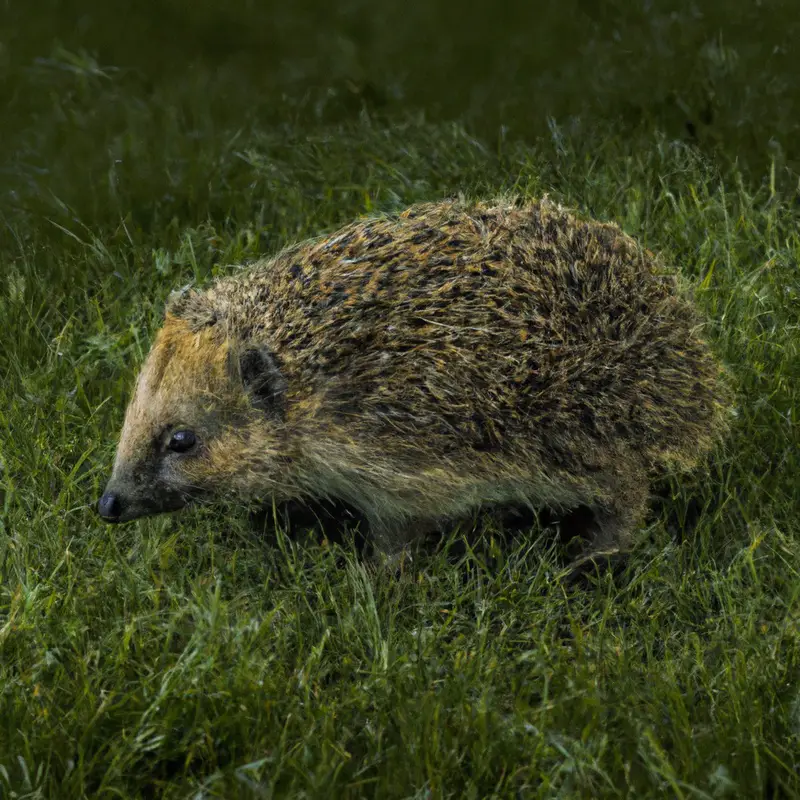
Hedgehog courtship and mate selection
In hedgehog courtship, male hedgehogs actively pursue mates while females play a role in selecting their preferred partner.
Various factors influence hedgehog mate selection.
Explanation of the male hedgehog’s pursuit of a mate
Male hedgehogs pursue mates by engaging in a combination of behaviors. Firstly, they emit a series of high-pitched vocalizations to attract females.
Secondly, they engage in a unique “dance” by circling their intended mate and performing rhythmic movements.
Thirdly, they use their scent glands to mark their territory and leave a trail for females to follow. By displaying these actions, male hedgehogs increase their chances of finding a mate.
It’s fascinating to observe how these behavior patterns contribute to the successful courtship and reproduction of hedgehogs.
Description of female hedgehog’s role in choosing a mate
Choosing a mate is an important decision for female hedgehogs.
They have their own methods for selecting a suitable partner.
Female hedgehogs typically evaluate potential mates based on their size, health, and physical condition.
They also rely on scent to determine compatibility.
A female may engage in a variety of behaviors including circling the male, sniffing, and following him closely.
Ultimately, it is the female hedgehog who decides whether or not to engage in reproduction with a particular male.
Factors that influence hedgehog mate selection
There are several factors that influence hedgehog mate selection.
Firstly, scent plays a vital role in attracting mates.
Hedgehogs have scent glands that release pheromones, which help them communicate their reproductive readiness.
Secondly, territory is important.
Hedgehogs prefer mates that have established territories suitable for nesting and raising offspring.
Thirdly, physical health and strength are key factors.
Hedgehogs seek mates that appear healthy and capable of providing strong genes for their offspring.
Finally, compatibility and mutual attraction are also important factors in hedgehog mate selection.
Hedgehog territory and mating behavior
During mating season, hedgehogs establish territories where they engage in specific mating behaviors.
Overview of hedgehog territories during mating season
During the mating season, hedgehogs establish territories to attract mates.
These territories are crucial for their reproductive success.
Hedgehogs mark their territories using scent glands and by leaving droppings.
They may also engage in aggressive behaviors to defend their territory from rivals.
These territories provide a safe space for hedgehogs to find and connect with potential mates.
Establishing and maintaining a territory is an important aspect of hedgehog mating behavior.
Explanation of hedgehog mating behaviors within territories
Hedgehogs are fascinating creatures when it comes to mating behaviors within their territories. The male hedgehog will mark its territory with urine or by rubbing against objects to leave scent trails, signaling its presence to potential mates.
When a female hedgehog enters his territory, he will court her by performing a series of courtship behaviors, such as circling, sniffing, and quivering.
If the female is receptive, they will mate. It’s interesting how hedgehogs have their own unique rituals and behaviors when it comes to finding a mate within their territories.
Reproduction and gestation
Hedgehogs reproduce sexually and have a gestation period of around 35 days.
Explanation of hedgehog fertilization and conception
Hedgehog fertilization and conception occur through a process called copulation.
The male hedgehog approaches the female, and courtship behaviors such as circling and sniffing take place.
Once they are positioned correctly, copulation occurs.
Hedgehogs have internal fertilization, meaning that the sperm is deposited directly into the female’s reproductive tract.
After fertilization, the embryo implants itself into the lining of the female’s uterus and begins to develop.
Hedgehog gestation typically lasts around 35-40 days before the young are born.
Overview of hedgehog pregnancy and gestation period
Hedgehog pregnancy typically lasts around 30 to 40 days.
During this time, the female hedgehog is pregnant and her body goes through changes to accommodate the growing babies.
The gestation period is relatively short compared to other mammals.
Female hedgehogs usually give birth to a litter of 3 to 5 hoglets.
The hoglets are born blind, hairless, and completely dependent on their mother for care.
After about 4 to 6 weeks, they start venturing out on their own.
It’s a fascinating process to witness!
Hedgehog population control
Hedgehog population control involves managing the number of hedgehogs to maintain a sustainable balance in their habitat.
Factors such as food availability, predation, and disease play a crucial role in regulating hedgehog populations.
Overview of hedgehog breeding patterns and population growth
Hedgehogs have unique breeding patterns that contribute to their population growth. Breeding season typically occurs from April to September, with peak activity in May and June.
During this time, males will actively search for females, often traveling long distances to find a mate.
Hedgehogs are promiscuous breeders, meaning they mate with multiple partners. After mating, females will give birth to a litter of 3 to 7 hoglets, who will then leave the nest after 3-4 weeks.
This reproductive strategy allows hedgehogs to rapidly expand their population, especially in areas with abundant food and suitable habitat.
Factors that influence hedgehog population control
Hedgehog population control is influenced by a variety of factors.
- Habitat loss: Destruction of natural habitats reduces the space available for hedgehogs to live and breed.
- Predators: Increased presence of predators, such as foxes and badgers, can lead to higher rates of hedgehog predation.
- Food availability: Availability of food sources, such as insects, worms, and slugs, directly impacts the hedgehog population.
- Human activity: Human activities, such as urbanization, pollution, and use of pesticides, can negatively affect hedgehog populations.
- Climate change: Changes in climate patterns can disrupt the hedgehogs’ natural breeding cycles and impact their overall survival.
- Road mortality: Hedgehogs are often victims of traffic accidents when crossing roads in search of food or mates.
Understanding and addressing these factors is crucial for effective hedgehog population control and conservation efforts.
Frequently Asked Questions
How long does hedgehog mating season last?
Hedgehog mating season typically lasts from April to September. During this time, male hedgehogs actively search for female mates.
They communicate using a combination of sounds, scents, and behaviors to attract a partner.
Once a female hedgehog is ready to mate, she releases pheromones to signal her availability. The mating process itself can be quite noisy, with lots of grunts, snorts, and squeals.
After mating, the female will undergo gestation for about 30 to 40 days before giving birth to a litter of hoglets.
Do hedgehogs mate for life?
Hedgehogs do not mate for life.
Unlike some other animal species, hedgehogs are not monogamous.
They engage in multiple mating partners throughout their lives, usually during the breeding season.
Male hedgehogs will compete with each other for the attention of females, and females will mate with multiple males to increase their chances of successful reproduction.
After mating, the males and females go their separate ways and take care of their young independently.
Can hedgehogs reproduce asexually?
No, hedgehogs cannot reproduce asexually. They require a male and a female hedgehog to mate in order to reproduce.
The male hedgehog will court the female and then they will mate.
The female hedgehog will then carry and give birth to the young hedgehogs. Reproduction in hedgehogs is a sexual process, not an asexual one.
How many babies do hedgehogs typically have?
Hedgehogs typically have around 4 to 5 babies, although the number can vary. This is known as a litter.
After a gestation period of about 35 days, female hedgehogs give birth to their offspring.
The babies, called hoglets, are born blind and hairless. They rely on their mother for warmth and nourishment.
As they grow, their spines begin to develop, and they become more independent.
How long does it take for baby hedgehogs to reach sexual maturity?
Baby hedgehogs typically reach sexual maturity at around 6 to 10 months of age. During this time, they undergo important physical and hormonal changes that enable them to reproduce.
Once they reach sexual maturity, male and female hedgehogs are ready to find mates and begin the breeding process.
It’s important to ensure that baby hedgehogs have a safe and appropriate environment during this period to support their growth and development.
Final Verdict
Hedgehogs employ a combination of courtship rituals, scent marking, vocalizations, and mate selection to find and attract suitable mates.
Their reproductive anatomy plays a crucial role in the mating process, with male and female hedgehogs having specific reproductive organs.
Territory also influences their mating behavior, as they mark and defend their areas during mating season.
Hedgehog reproduction involves fertilization, gestation, and the birth of a litter.
The population of hedgehogs is controlled through various factors.
Overall, understanding the intricacies of hedgehog mating behavior helps us appreciate their unique reproductive strategies.

